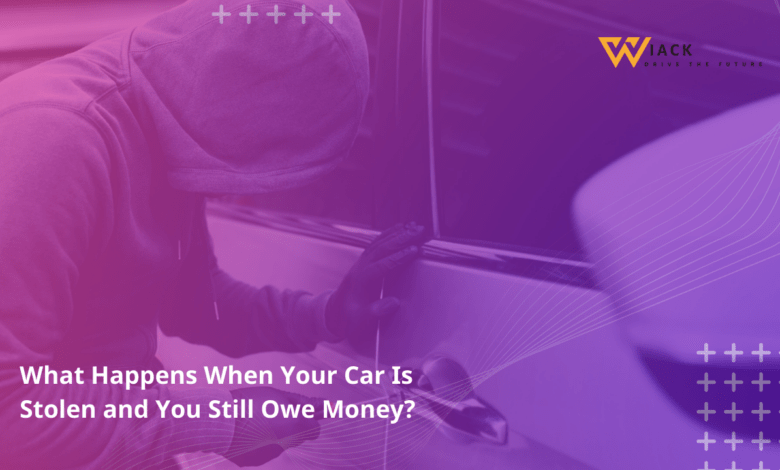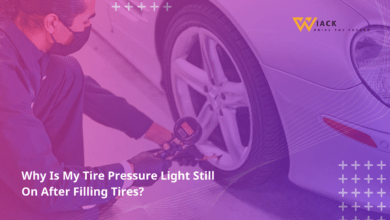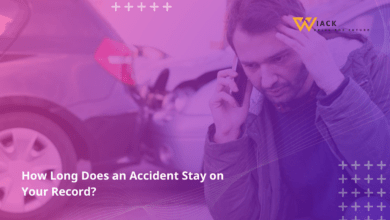What Happens When Your Car Is Stolen and You Still Owe Money?

Did you know that in 2023, nearly 800,000 vehicles were reported stolen in the United States alone? This staggering statistic highlights the prevalence of car theft and the importance of understanding what to do if you find yourself in this unfortunate situation, especially if you still owe money on your vehicle. In this comprehensive guide, we’ll explore the steps you need to take and the challenges you might face when your car is stolen and you still owe money.
The Initial Steps
When you discover that your car has been stolen, it’s crucial to act quickly and methodically. The first few hours after the theft can be critical in potentially recovering your vehicle and ensuring that you’re protected financially.
Reporting the Theft
The moment you realize your car is missing, your first priority should be to report the theft to the appropriate authorities.
Contacting the Police
Immediately call your local police department’s non-emergency number to report the theft. While it may feel like an emergency to you, it’s important to keep the emergency lines open for life-threatening situations. When you call, be prepared to provide the following information:
- Your car’s make, model, and color
- The license plate number
- The Vehicle Identification Number (VIN)
- Any distinctive features or modifications
- The last known location of your vehicle
- The approximate time you last saw your car
Remember to stay calm and provide as much detail as possible. The more information you can give, the better chance the police have of locating your vehicle.
Filing a Police Report
After contacting the police, you’ll need to file an official police report. This document is crucial for several reasons:
- It creates an official record of the theft
- Insurance companies typically require a police report to process your claim
- If your car is used in any criminal activities, the report protects you from liability
Make sure to obtain a copy of the police report or at least the report number. You’ll need this information when dealing with your insurance company and lender.
Contacting Your Insurance Company
Once you’ve reported the theft to the police, your next step is to contact your insurance company. This step is critical, especially when your car is stolen and you still owe money on it.
Notifying Them of the Theft
Call your insurance company’s claims department as soon as possible. Most insurance companies have 24/7 hotlines for reporting claims. When you call, be prepared to provide:
- Your policy number
- The police report number
- Details about the theft (when and where it occurred)
- Information about your car (make, model, year, VIN)
Filing a Claim
During this call, you’ll initiate the claims process. Your insurance representative will guide you through the steps, which typically include:
- Providing a detailed description of your car
- Listing any valuable items that were in the car when it was stolen
- Answering questions about the circumstances of the theft
Remember, honesty is crucial when filing an insurance claim. Providing false information can lead to claim denial and potential legal consequences.
Gathering Necessary Documentation
Your insurance company will require several documents to process your claim. Start gathering these as soon as possible:
- A copy of the police report
- Your car’s title or lease agreement
- Recent maintenance records
- Photos of your car (if you have any)
- A list of personal items that were in the car
Having these documents ready can help expedite the claims process and get you closer to a resolution.
The Insurance Process
Understanding how insurance companies handle stolen car claims is crucial, especially when your car is stolen and you still owe money on it. The process can be complex, but knowing what to expect can help you navigate it more effectively.
Determining the Car’s Value
One of the first things your insurance company will do is determine the value of your stolen vehicle. This valuation is critical as it will directly impact the amount of your insurance payout.
Fair Market Value (FMV)
Insurance companies often use the Fair Market Value (FMV) to determine how much your car was worth at the time it was stolen. FMV takes into account several factors:
- The make, model, and year of your car
- Its overall condition before the theft
- Mileage
- Any modifications or upgrades
- Recent sales of similar vehicles in your area
It’s important to note that FMV is typically less than what you might see advertised for similar cars at dealerships. This is because dealership prices often include markups and other costs.
Actual Cash Value (ACV)
Some insurance companies use Actual Cash Value (ACV) instead of FMV. ACV is similar to FMV but often takes into account depreciation more aggressively. The ACV is calculated by:
- Starting with the replacement cost of your vehicle
- Subtracting depreciation based on factors like age, condition, and mileage
Understanding the difference between FMV and ACV can help you better interpret your insurance company’s valuation of your stolen car.
Insurance Coverage
The type and extent of your insurance coverage will play a significant role in how your claim is handled when your car is stolen and you still owe money.
Comprehensive Coverage
Comprehensive coverage is the type of insurance that typically covers car theft. If you have comprehensive coverage:
- Your insurance will pay out the determined value of your car (minus your deductible)
- This payout is subject to your policy limits
- Personal items stolen with the car are usually not covered under auto insurance (these may be covered under homeowners or renters insurance)
If you only have liability coverage, unfortunately, your insurance won’t cover the theft of your vehicle.
Collision Coverage
While collision coverage is important for accidents, it doesn’t typically cover theft. However, if your car is recovered and has been damaged, collision coverage might come into play for repairs.
Gap Insurance
Gap insurance can be a lifesaver when your car is stolen and you still owe money. Here’s how it works:
- If the insurance payout for your stolen car is less than what you owe on your loan or lease, gap insurance covers the difference
- This prevents you from having to pay out of pocket for a car you no longer possess
For example:
- You owe $20,000 on your car loan
- Your insurance determines the car’s value at $15,000
- Without gap insurance, you’d owe $5,000 out of pocket
- With gap insurance, this $5,000 “gap” is covered
If you have a new car or are “upside down” on your loan (owing more than the car is worth), gap insurance can be a wise investment.
Dealing with Debt
One of the most challenging aspects of having your car stolen when you still owe money is managing the remaining debt. This situation can be financially and emotionally stressful, but understanding your options can help you navigate this difficult time.
The Loan Balance
When your car is stolen and you still owe money, you’re still responsible for the remaining balance on your loan. This is true even if your car is never recovered. Here’s what you need to know:
- Your loan agreement is separate from the physical car
- The lender expects repayment regardless of what happens to the vehicle
- Missing payments can negatively impact your credit score
It’s crucial to continue making your loan payments, even after the theft, to avoid defaulting on your loan and damaging your credit.
Potential Options
If you find yourself struggling to manage the debt after your car is stolen, there are several options you can consider.
Negotiating with the Lender
Many lenders are willing to work with borrowers who are facing hardship due to car theft. Here are some strategies you can try:
- Explain your situation to the lender
- Ask about hardship programs or temporary payment reductions
- Inquire about loan deferment options
- See if they’re willing to forgive part of the loan balance
Remember, lenders would rather work out a solution with you than have you default on the loan. Be honest, proactive, and willing to provide documentation of your situation.
Filing for Bankruptcy
In extreme cases, when the debt becomes unmanageable, some people consider bankruptcy. However, this should be a last resort due to its long-lasting financial implications. If you’re considering bankruptcy:
- Consult with a financial advisor or bankruptcy attorney
- Understand the different types of bankruptcy (Chapter 7 vs. Chapter 13)
- Consider the long-term impact on your credit score and financial future
Bankruptcy can provide relief from overwhelming debt, but it also has serious consequences that can affect your financial life for years to come.
Moving Forward
After dealing with the immediate aftermath of car theft and addressing the financial implications, it’s time to think about how to move forward. This includes considering your transportation needs and taking steps to prevent future theft.
Getting a New Car
When your car is stolen and you still owe money, getting a new vehicle can be complicated. Here are some factors to consider:
Using Insurance Proceeds
If your insurance payout is sufficient, you may be able to use it to purchase a new car. Consider the following:
- Look for a car that fits within your insurance payout amount
- Factor in any out-of-pocket expenses you’ll need to cover
- Consider buying a less expensive car to avoid taking on new debt
Remember, if you had gap insurance and it covered the difference between your insurance payout and your loan balance, you might have more flexibility in choosing a new vehicle.
Securing a New Loan
If you need to take out a new loan for your next car, keep these points in mind:
- Your credit score may have been impacted by the theft and loan situation
- You might face higher interest rates due to the recent loss
- Consider a larger down payment to reduce the loan amount and potentially secure better terms
Before committing to a new loan, make sure you’re comfortable with the terms and that the payments fit within your budget.
Preventing Future Theft
While you can’t completely eliminate the risk of car theft, there are steps you can take to reduce the likelihood of it happening again.
Investing in Anti-theft Devices
Consider adding one or more of these anti-theft devices to your new car:
- Steering wheel locks
- Kill switches
- GPS tracking systems
- Alarm systems
Many insurance companies offer discounts for vehicles equipped with anti-theft devices, so this investment could also lower your insurance premiums.
Parking in Secure Locations
Where you park your car can significantly impact its security. Whenever possible:
- Use a garage or carport at home
- Park in well-lit areas when out
- Choose attended parking lots in high-crime areas
- Avoid leaving your car on the street overnight
Being Vigilant about Your Car’s Security
Developing good habits can go a long way in preventing car theft:
- Always lock your doors, even for short stops
- Never leave your car running unattended
- Don’t leave valuables visible in your car
- Be aware of your surroundings when parking
By implementing these strategies, you can significantly reduce the risk of experiencing car theft again in the future.
In conclusion, dealing with a stolen car when you still owe money can be a complex and stressful situation. By understanding the process, from reporting the theft to dealing with insurance and managing the remaining debt, you can navigate this challenging time more effectively. Remember to stay proactive, communicate openly with your insurance company and lender, and take steps to protect yourself from future theft. With patience and persistence, you can overcome this setback and move forward with confidence.
Get the latest car news, reviews, and prices at Wiack.com. Your one-stop destination for all things automotive.





